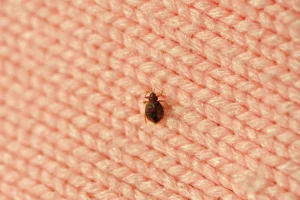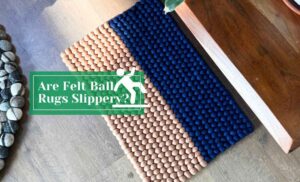There is a myth circulating worldwide i.e wool causes allergy. Well to break it to you, wool alone is not the only culprit for all that itchiness. There are many contributing factors like chemicals, dyes, lanolin, and many more.
In this blog, we are going to address all the thing that causes itchiness when wearing wool. We are also going to give you some suggestions on how to minimize that itchiness when wearing wool.
 So, before coming to the conclusion that you are allergic to wool, make sure is it simple itchiness or more than that. Sometimes the symptoms can be extreme and might require medical attention as well. If you experience the following symptoms then you have an allergy.
So, before coming to the conclusion that you are allergic to wool, make sure is it simple itchiness or more than that. Sometimes the symptoms can be extreme and might require medical attention as well. If you experience the following symptoms then you have an allergy.
 So, check whether there is an insect or not. You wouldn’t want insects crawling on your body. Just Writing about having insects on the body gives me creeps.
So, check whether there is an insect or not. You wouldn’t want insects crawling on your body. Just Writing about having insects on the body gives me creeps.
Is it Allergy to Wool?
A true wool allergy is pretty rare and not many people have it. Then you must be thinking, What are all those itching and irritation when wearing wool garments? Feeling itchy is totally different from having an allergy. After much research on the people, they have concluded that the allergy is caused due Lanolin. It is a natural waxy coating found on the fibers of wool. It helps in keeping the fiber of the wool water resistant and fire resistant. A piece of good news for everyone. When reviews were taken among 24,000 people with a high risk of allergy, it showed that only 1.7% of people experienced a reaction to the lanolin. So, it is a rare case for people to have a Lanolin allergy. So, how to know whether you are allergic to Wool and Lanolin or not? Try wearing a base under before putting on the wool garment. If you don’t experience any sort of itchiness then you just have sensitive skin and because of the brought fiber, you are experiencing that. A person with an allergy would easily react to the wool despite wearing a base underneath. If they use any product containing Lanolin then that would also cause the person to react to it. So, before coming to the conclusion that you are allergic to wool, make sure is it simple itchiness or more than that. Sometimes the symptoms can be extreme and might require medical attention as well. If you experience the following symptoms then you have an allergy.
So, before coming to the conclusion that you are allergic to wool, make sure is it simple itchiness or more than that. Sometimes the symptoms can be extreme and might require medical attention as well. If you experience the following symptoms then you have an allergy.
- Swelling of eye, throat, and lip
- Shortness of breath
- Rashes around the body
- Dropped Blood Pressure
- Ear and Lung Infections
Why Does Wool Itch?
If it is not an allergy then why does it itch every time I wear wool? This one question sure popped up in your mind. Keep in mind that not all wools are itchy. The itchiness of the wool is determined by the size, quality of the fiber of the wool, dye used in the wool, and chemical used to clean the wool. Let’s look at each factor.Size of the Fiber
The size of the fiber ranges forms fine to coarser. The fine fibers are soft to the skin and easily bend when brushed against the skin. So, this doesn’t irritate the nerve receptors on the skin. Whereas the coarse fiber is more rigid. So, when the coarse fiber brush against the skin the scales of the fiber can trigger the nerve ending on the skin surface. It signals your brain that itchy sensation. So, coarse the fiber is, it will irritate your skin more. Not only wool this can be said for other types of fiber as well.Length of the Fiber
The length of the fiber also plays part in causing discomfort. if the fiber is shorter then it feels more prickly as there are more fiber ends in the given surface area of the fabric. Longer-length fibers are not as sturdy and prickly as the shorter ones. So there is low chance of irritation when the wool fiber is long.Dye
Different dyes are used to give beautiful color to the wool. The common dyes used to color wools are acid dyes. They are available in a variety of vibrant color and the wool easily pick up the color and gives a long-lasting result. Some people may be allergic to artificial dye so they might experience irritation when it comes in contact with their skin. For those people, it is better to choose wool which has its natural color and no artificial dye is used to give color.Chemical
Before the wool is taken for spinning it is cleaned thoroughly to clean all the debris and dirt present in the wool. Lanolin is also removed. In this process, different harmful chemicals and bleaching agents are used to clean the wool. These chemicals are harsh enough to burn the debris away from the wool. Some people may be allergic to those chemicals. When they wear the wool, it can cause an allergic reaction which causes the person to itch. So, the allergic reaction is not because of the wool but because of the chemicals used in cleaning the wool.Presence of Insects
Wool is an animal product. So, different insects that feed on the wool latch onto these surfaces. Insects like mites feed on the wool as it is the dead protein fiber for them. The wools also can have moth infestation. This can be the factor that is causing irritation. So, check whether there is an insect or not. You wouldn’t want insects crawling on your body. Just Writing about having insects on the body gives me creeps.
So, check whether there is an insect or not. You wouldn’t want insects crawling on your body. Just Writing about having insects on the body gives me creeps.
Clothing Tips to Prevent Itching
Here are the tips you can follow to prevent your cloth from irritation or itching of any sort:- Stop wearing the clothes that are itching you.
- Switch to natural and loose clothes to prevent sweat build-up.
- Choose light-colored garments as they have less dye.
- Some garments which are labeled ‘wash separately’ can bleed dye to avoid those types of clothes.
- Prevent clothes that say wash and wear, dirt repellant, permanent press, and no iron as they are likely to have chemicals that can irritate your skin.
How to Soften the Itchy Wool?
Now that you know the reason why some wool can be itchy you might also want to if it is possible to soften the wool. There are some hacks you can try to soften the wools. They might not be 100% effective but they can soften the fiber to some extent.Using White Vinegar
Vinegar is a great alternative for fabric softeners. It is known for its property to soften other fabrics, so it can also soften wool as well. Here is how you use vinegar to soften the wool.- Place 1/4th vinegar to 1/2 cup of water on a kitchen sink or any sort of bowl.
- Put the cloth that you want to soften into the mixture.
- Let the fabric soak for 15 to 30 minutes depending on how coarse it is.
- After letting it soak for adequate time squeeze out the moisture and place it on a dry towel to let it absorb the excess water.
- Now place it in a shady space to dry.
Using Fabric Softener
This is also one of the great ideas to soften your fabric. As the name suggests its main purpose is to soften the fabric and it works great. Here is how you use it to soften the fabric.- Place a cap or two in the water and let yoru fabric soak for a few minutes.
- After soaking it for an adequate time rinse it and place it to dry.




